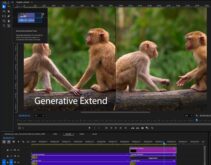 …is NOT how they encode their video. But, they do a lot of other things right with their streaming video.
…is NOT how they encode their video. But, they do a lot of other things right with their streaming video.
GoDaddy.com aggressively advertises videos on television to convince you to visit their web site. With celebrities Danica Patrick and Jillian Michaels on board, it’s a pretty good strategy.
Of course, when most viewers see these TV commercials, they probably wonder how it ends, and how close the two beauties come to baring all. Me? I wonder how Go Daddy is encoding their video and how social media-savvy they are when it comes to their player. Well, it turns out the Go Daddy is using the Plain Jane VP6 codec for encoding, which they might want to rethink. Most broadcasters have switched to H.264 for multiple reasons, including:
* Better video quality than VP6
* Playback acceleration in the Flash Player, which VP6 doesn’t have
* Compatibility with mobile devices if that’s a desired distribution channel
* The AAC audio codec is a better codec than the MP3 codec used with VP6
Two years ago, we didn’t know if using H.264 might incur royalties in the future, but that situation has long been resolved. Now we know that free Internet distribution of H.264-encoded video will never incur royalties.
Other techniques used by Go Daddy are actually quite progressive. The site auto senses your connection speed when you click onto the video page, and sends the appropriate stream, either low or high resolution. The low-resolution stream is 640×360@24p at 400 kbps video/128 kbps stereo audio at 44.1 KHz. This translates to a bits-per-pixel of .072, which is aggressive.
However, the producer does a nice job keeping detail out of the video and using a narrow depth of field, so the background is always blurry, making it easier to compress, and focusing your attention on the foreground subject. You can see this in Figure 1 below, where Ms. Michaels is firing her agent for agreeing to the latest crazy scheme.

Contents
Figure 1. Note the narrow depth of field, which makes this video very easy to compress.
The high-resolution stream is 640×360@24p at 800 kbps video/128 kbps stereo audio at 44.1 Khz, which is very conservative compared to other prominent B2C brands, where the most aggressive producers average closer to 720p at 1.5 Mbps video/111 kbps audio. You can see this in Table 1, which is a survey of 16 high-profile B2C sites that I conducted in November 2011. If it were me, and I was paying these two celebrities, I’d produce an 720p version at around 2 Mbps or higher. To complete the loop, the Go Daddy high-resolution stream has a bits-per-pixel value of .145.

Table 1. Survey of B2C producers from November, 2011.
On the player and social media front, Go Daddy does pretty well. As you can see in Figure 2, you can display a close captioned stream, which few videos on the web currently do. You can share the video via Facebook or Twitter, send an text message or email with a link, or link to the video, but not embed it, which I would consider. And you can subscribe to get notified when additional ads are posted.

Figure 2. Go Daddy has a well featured player with lots of social media links.
You can also rate the video, which starts a five-step wizard that asks how you liked the video, and then gathers age and other demographic information, which is a smart way to capture that data. As you can see from the survey results below, the reception was mixed.

Figure 3. Survey results.
That said, as a brand-building exercise, I’m sure the ratings aren’t important, so long as only a few viewers find it offensive. As they say, there is no such thing as bad publicity.
 Streaming Learning Center Where Streaming Professionals Learn to Excel
Streaming Learning Center Where Streaming Professionals Learn to Excel








